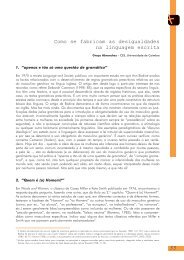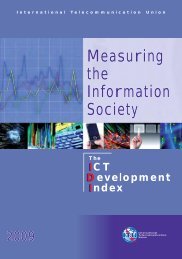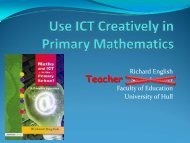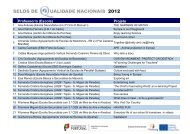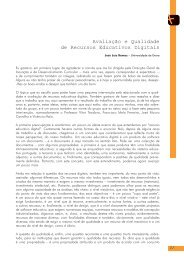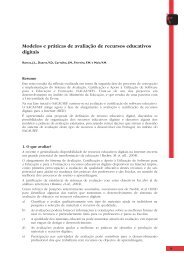J. J. <strong>Thomson</strong> 6Experiment to measure the mass to charge ratio of cathode raysIn his classic experiment, <strong>Thomson</strong> measured the mass-to-charge ratio of the cathode rays by measuring how muchthey were deflected by a magnetic field and comparing this with the electric deflection. He used the same apparatusas in his previous experiment, but placed the discharge tube between the poles of a large electromagnet. He foundthat the mass to charge ratio was over a thousand times lower than that of a hydrogen ion (H + ), suggesting either thatthe particles were very light and/or very highly charged. [6]The details of the calculation are:The electric deflection is given by Θ = Fel/mv 2 where Θ is the angular electric deflection, F is applied electricintensity, e is the charge of the cathode ray particles, l is the length of the electric plates, m is the mass of the cathoderay particles and v is the velocity of the cathode ray particles.The magnetic deflection is given by φ = Hel/mv where φ is the angular magnetic deflection and H is the appliedmagnetic field intensity.The magnetic field was varied until the magnetic and electric deflections were the same, when Θ = φ and Fel/mv 2 =Hel/mv. This can be simplified to give m/e = H 2 l/FΘ. The electric deflection was measured separately to give Θ andH, F and l were known, so m/e could be calculated.ConclusionsAs the cathode rays carry a charge of negative electricity, are deflected by an electrostatic force as if they werenegatively electrified, and are acted on by a magnetic force in just the way in which this force would act on anegatively electrified body moving along the path of these rays, I can see no escape from the conclusion thatthey are charges of negative electricity carried by particles of matter.—J. J. <strong>Thomson</strong> [11]As to the source of these particles, <strong>Thomson</strong> believed they emerged from the molecules of gas in the vicinity of thecathode.If, in the very intense electric field in the neighbourhood of the cathode, the molecules of the gas aredissociated and are split up, not into the ordinary chemical atoms, but into these primordial atoms, which weshall for brevity call corpuscles; and if these corpuscles are charged with electricity and projected from thecathode by the electric field, they would behave exactly like the cathode rays.—J. J. <strong>Thomson</strong> [11]<strong>Thomson</strong> imagined the atom as being made up of these corpuscles orbiting in a sea of positive charge; this was hisplum pudding model. This model was later proved incorrect when Ernest Rutherford showed that the positive chargeis concentrated in the nucleus of the atom.Awards and recognition• Royal Medal (1894)• Hughes Medal (1902)• Nobel Prize for Physics (1906)• Elliott Cresson Medal (1910)• Copley Medal (1914)• Franklin Medal (1922)In 1991 the thomson (symbol: Th) was proposed as a unit to measure mass-to-charge ratio in mass spectrometry.
J. J. <strong>Thomson</strong> 7Notes[1] Rayleigh (1941). "Joseph John <strong>Thomson</strong>. 1856-1940". Obituary Notices of Fellows of the Royal Society 3 (10): 586–526.doi:10.1098/rsbm.1941.0024.[2] Davis & Falconer, J.J. <strong>Thomson</strong> and the Discovery of the Electron[3] Venn, J.; Venn, J. A., eds. (1922–1958). " <strong>Thomson</strong>, Joseph John (http:/ / venn. lib. cam. ac. uk/ cgi-bin/ search. pl?sur=& suro=c& fir=&firo=c& cit=& cito=c& c=all& tex=THN876JJ& sye=& eye=& col=all& maxcount=50)". Alumni Cantabrigienses (10 vols) (online ed.).Cambridge University Press.[4] J.J. <strong>Thomson</strong> (1897) "Cathode Rays", The Electrician 39, 104[5] Falconer (2001)"Corpuscles to electrons"[6] J.J. <strong>Thomson</strong> (1897)"Cathode rays", Philosophical Magazine, 44, 293[7] <strong>Thomson</strong>, J. J. (1905). "On the emission of negative corpuscles by the alkali metals". Philosophical Magazine, Ser. 6 10 (59): 584–590.doi:10.1080/14786440509463405.[8] Hellemans, Alexander; Bunch, Bryan (1988). The Timetables of Science. Simon & Schuster. pp. 411. ISBN 0671621300.[9] <strong>Thomson</strong>, J. J. (June 1906). "On the Number of Corpuscles in an Atom" (http:/ / dbhs. wvusd. k12. ca. us/ webdocs/ Chem-History/<strong>Thomson</strong>-1906/ <strong>Thomson</strong>-1906. html). Philosophical Magazine 11: 769–781. . Retrieved 2008-10-04.[10] <strong>Thomson</strong> (8 February 1897)'On the cathode rays', Proceedings of the Cambridge Philosophical Society, 9, 243[11] Cathode rays (http:/ / web. lemoyne. edu/ ~GIUNTA/ thomson1897. html) Philosophical Magazine, 44, 293 (1897)References• <strong>Thomson</strong>, George Paget. (1964) J.J. <strong>Thomson</strong>: Discoverer of the Electron. Great Britain: Thomas Nelson & Sons,Ltd.• 1883. A Treatise on the Motion of Vortex Rings: An essay to which the Adams Prize was adjudged in 1882, in theUniversity of Cambridge. London: Macmillan and Co., pp. 146. Recent reprint: ISBN 0-5439-5696-2.• 1888. Applications of Dynamics to Physics and Chemistry. London: Macmillan and Co., pp. 326. Recent reprint:ISBN 1-4021-8397-6.• 1893. Notes on recent researches in electricity and magnetism: intended as a sequel to Professor Clerk-Maxwell's'Treatise on Electricity and Magnetism'. Oxford Univ. Press, pp.xvi and 578. 1991, Cornell UniversityMonograph: ISBN 1-4297-4053-1.• 1921 (1895). Elements Of The Mathematical Theory Of Electricity And Magnetism. London: Macmillan and Co.Scan of 1895 edition. (http:// books. google. com/ books?hl=en& id=w9kEAAAAYAAJ& dq=elements+ of+the+ mathematical+ theory+ of+ electricity+ and+ magnetism& printsec=frontcover& source=web&ots=Mw8GUkl4QZ& sig=x2NrouxSJUBEt2Il72Bkw3QBs38#PPP7,M1)• A Text book of Physics in Five Volumes, coauthored with J.H. Poynting: (1) Properties of Matter (http:// www.archive. org/ details/ textbookofphysic01poynuoft), (2) Sound (http:// books. google. com/books?id=e74KAAAAIAAJ& pg=PA3& dq=J. J. + <strong>Thomson</strong>& source=gbs_selected_pages&cad=0_1#PPP6,M1), (3) Heat (http:// www. archive. org/ details/ textbookofphysic00poynuoft), (4) Light, and(5) Electricity and Magnetism (http:// www. archive. org/ details/ textbookofphysi00poynuoft). Dated 1901 andlater, and with revised later editions.• Navarro, Jaume, 2005, " <strong>Thomson</strong> on the Nature of Matter: Corpuscles and the Continuum, (http:// www.ingentaconnect. com/ content/ mksg/ cnt/ 2005/ 00000047/ 00000004/ art00001)" Centaurus 47(4): 259–82.• Downard, Kevin, 2009. "J.J. <strong>Thomson</strong> Goes to America" J. Am. Soc. Mass Spectrom. 20(11): 1964–1973. (http:// dx. doi. org/ 10. 1016/ j. jasms. 2009. 07. 008)• Dahl, Per F., "Flash of the Cathode Rays: A History of J.J. <strong>Thomson</strong>'s Electron". Institute of Physics Publishing.June, 1997. ISBN 0-7503-0453-7• J.J. <strong>Thomson</strong> (1897) "Cathode Rays", The Electrician 39, 104, also published in Proceedings of the RoyalInstitution April 30, 1897, 1–14—first announcement of the "corpuscle" (before the classic mass and chargeexperiment)• J.J. <strong>Thomson</strong> (1897), Cathode rays (http:// web. lemoyne. edu/ ~GIUNTA/ thomson1897. html), PhilosophicalMagazine, 44, 293—The classic measurement of the electron mass and charge



